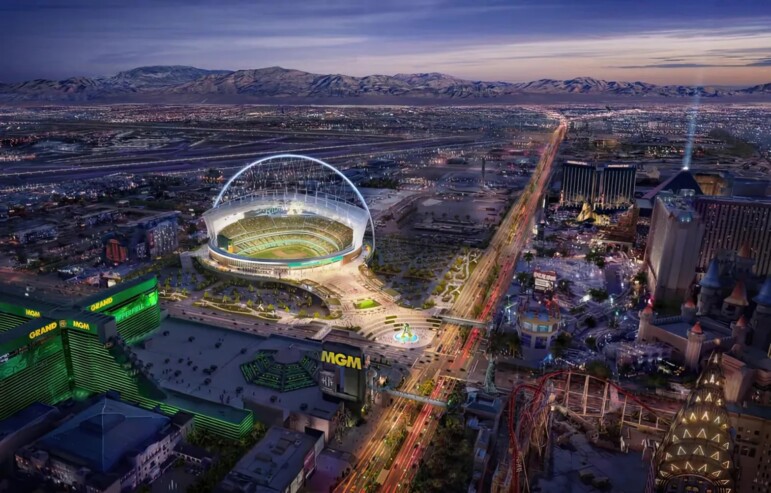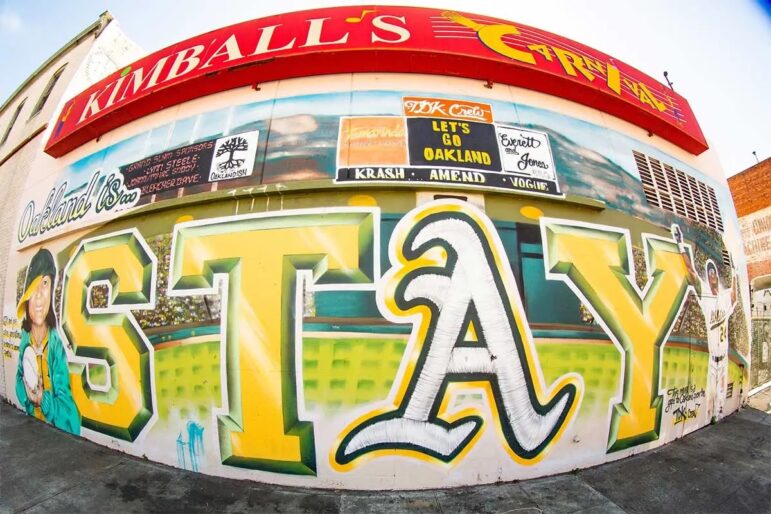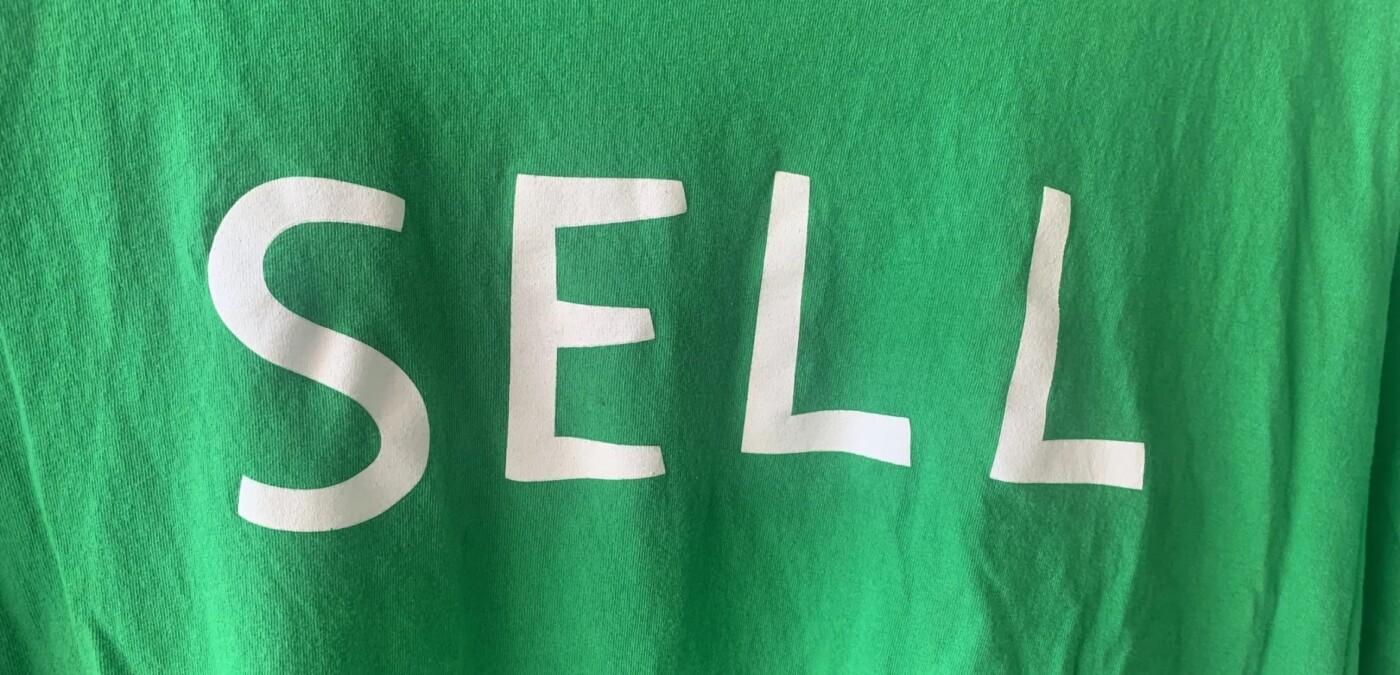On an ordinary Thursday in mid-June, Nevada Governor Joe Lombardo signed the bill that might have sealed the fate of the team that is currently the Oakland Athletics, securing $380 million in public funding to go toward a new baseball stadium in Nevada.
Yet it wasn’t just this potentially catastrophic shakeup that was drawing national attention to the A’s that week, nor even the team’s poor play on the field that generated discussion. Instead, two days earlier on Tuesday, June 13, the team with the lowest payroll, lowest attendance and worst record in baseball, played in front of a raucous crowd in a packed Oakland Coliseum brought to life by its fans.

These fans, armed with chants, t-shirts, cheers and drums, organized a massive reverse boycott. Since then, they have continued to put pressure on owner John Fisher to sell, and by extension, save their team.
Two A’s fan groups came together to bring this tenacious movement to life.
The Oakland 68’s liken themselves to a rowdy supporters’ section you might see in European soccer. They bring an energy from their home in the Coliseum’s right-field bleachers not found in other Major League Baseball stadiums.
“I sat in the right field bleachers every time,” said Oakland 68’s President Jorge Leon. “We would see the same faces over and over and eventually got together and started drumming, waving flags and chanting.”
Meanwhile, fans call the Coliseum The Last Dive Bar, but it’s not just their quirky nickname for the stadium but also for a fan group that calls the left-field bleachers home. This group came together from a passion for art and design, selling unique merchandise that tells the story of being an A’s fan.
“We were three dummies with Adobe subscriptions who figured out how to use the Internet,” said Paul Bailey, one of three founders of the Last Dive Bar.
It took the efforts of both the 68’s and the Last Dive Bar to orchestrate the reverse boycott.
The 68’s organized a fan-funded giveaway to hand out green t-shirts with just one word printed prominently on the chest — “SELL.”
The Last Dive Bar, meanwhile, distributed cheer cards to coordinate a moment where the A’s faithful went silent for a minute at the top of the fifth inning before breaking out in a booming “Sell the Team” chant.
The “Summer of Sell” has only spread since the boycott. The Last Dive Bar brought raucous “Sell the team” chants to the Major League Baseball draft and to this year’s All-Star Game in Seattle.
“Fanbases see what is going on and they don’t want that for their team or for baseball, so they’ll take up a chant,” Bailey said.
“Sell” t-shirts have been popping up at stadiums across the MLB, while fan-organized protests follow the team across the country. A’s fans united with rival Giants fans for a “Unite the Bay” protest at Oracle Park in San Francisco.
Leon spoke from Washington D.C., hours before bringing the cause to the nation’s capital for an A’s game against the Nationals.
“The MLB is listening,” he said. “They are awakening to this fan revolt and it’s having an impact.”
“Every time we do it, it is getting bigger and bigger,” Bailey added. “The momentum has grown, and I don’t think the MLB could stop us now if they tried.”
A’s fan groups have no plans to slow down. Already they are working on ways to keep the pressure up in the offseason and into the next season, where the A’s are set to play out the final year of their Coliseum lease in Oakland.
The movement has served as inspiration that has brought together fans from across the league, allowing them to express views they say are often overlooked.
“In the ecosystem of professional sports, fans don’t typically have much of a voice, even though they are the reason that owners are making a lot of money,” said Aaron Miller, a lecturer at Cal State East Bay and self-described anthropologist of sport.
Relocation is nothing new in professional sports and has happened dozens of times. The Giants and Dodgers moved to California from New York. The A’s themselves have moved several times in their history, jumping from Philadelphia to Kansas City before finding a home in Oakland in 1968.
The response this time, however, is something unique. It speaks, some say, to the character of Oakland sports fans.
“We are the best fanbase in sports,” Leon said. “We strive to be what we are in Oakland — a diverse group of people that do what we can to provide for others.”
“There is a culture around being an A’s fan. There is a quirkiness and intangible weirdness,” Bailey said. “People who are A’s fans are used to being the underdog and little brother.”
It’s been a difficult few years Oakland sports. The NBA’s Warriors moved across the Bay Bridge to San Francisco in 2019, while the NFL’s Raiders made the larger move to Las Vegas in 2020. Now the A’s, the last major professional sports team left in the East Bay, are looking to follow in the Raiders’ footsteps.
The A’s have meant a lot to the city, from bringing home a world series against the Giants in the 1989 Earthquake series, to reinventing baseball with Moneyball under General Manager Billy Beane.

But beyond that, professional sports teams bring community and a sense of belonging. It’s no wonder fans are fighting hard for the last one they have left.
“Sports teams speak to the desire we all have to belong to something,” Miller said. “As human beings, we need that sense of identification with a group that is larger than ourselves. When we have something that we feel we belong to taken away from us, that’s incredibly unfortunate.”
The question remains whether the work of these fans will be enough to save the team that means so much to them.
“I don’t think it’s likely that the reverse protests will have an impact on the ownership group of the A’s and the decisions they are making,” Miller said.
“I think 90 percent they’re gone, 10 percent they stay,” Bailey said.
Should the team leave, a distinct fanbase will be gone from the MLB.
“The A’s are dead to me, the MLB is dead to me and I’m not going to become a Giants fan, that’s for sure,” Leon said.
“I will swear off baseball, I will be so disturbed by it,” Bailey added. “It is a whole community that would drift away and die.”
But if these are the dying breaths of the Oakland A’s, the fans aren’t giving up the ghost. They have made the most of their opportunity to show the impact they have and how, in some important ways, they are the heart of the team.
“We are starting a movement,” Leon said. “Even if the A’s move, we hope we bring attention to other fan bases to come together. To have a voice, because you do have a voice.”
